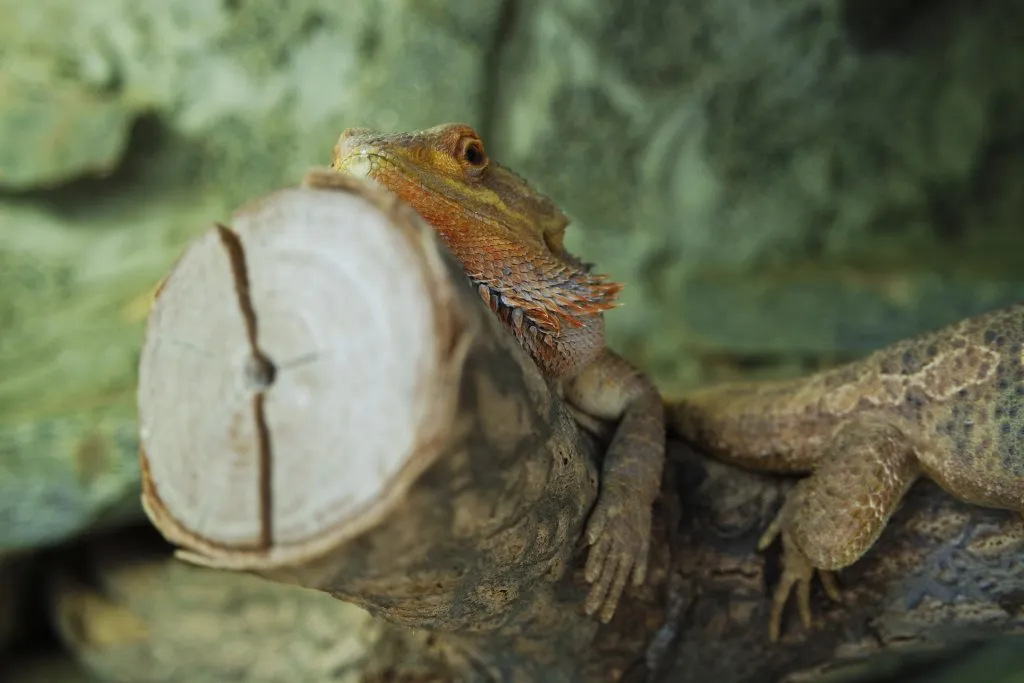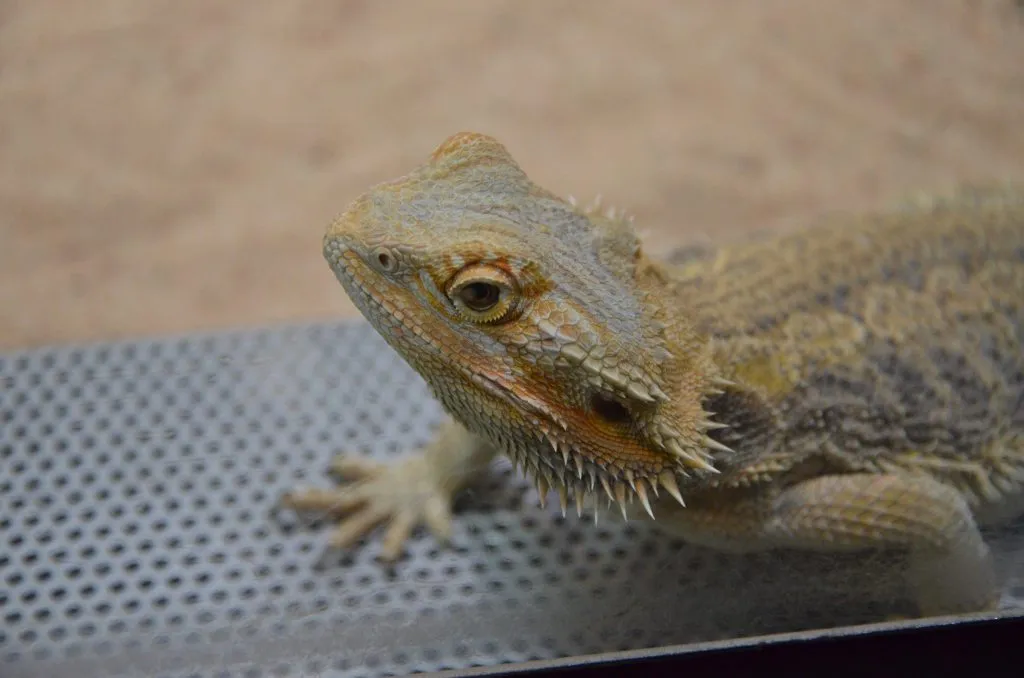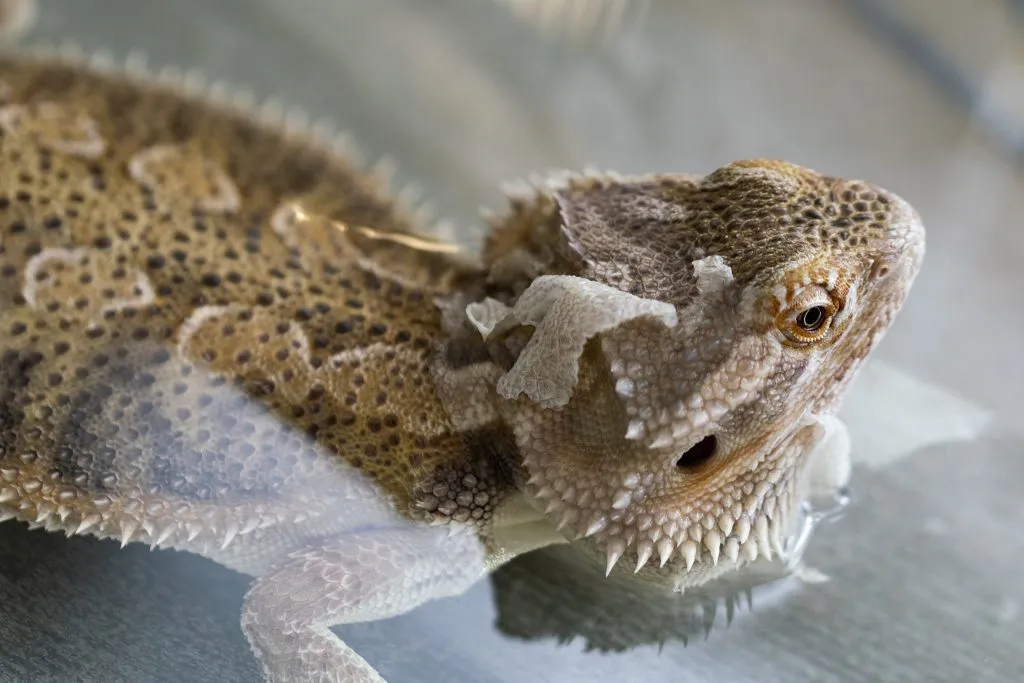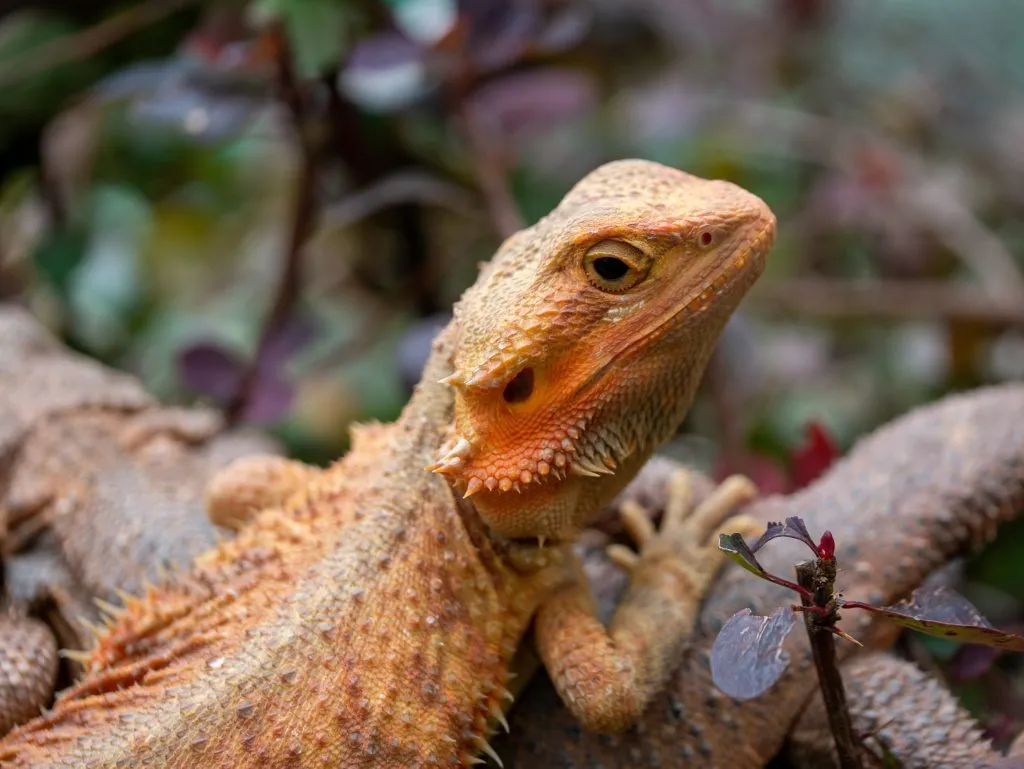
Bearded Dragons come from arid Australian areas, and inadequate humidity may jeopardize their health in the long run. Therefore, you need to pay attention to the recommended humidity levels required for your lizard. Only that way you can prevent possible consequences of not following the guidelines.
Bearded Dragons require an environment with a relative moisture percentage like in their natural habitat. These lizards are not desert species, so they need approximately 30 to 40% humidity and adequate temperature. Significant deviations may jeopardize their health and lead to lethal outcomes.
This article aims to inform you about the correct humidity your Bearded Dragon needs to be healthy and the possible consequences of inadequate living conditions.
Table of Contents
The Best Humidity for Bearded Dragons
Since Bearded Dragons’ natural habitat is in Australia’s inland regions, you can expect them to enjoy a dry climate. However, things are a bit more complicated since these lizards are not desert species.
In most cases, your pet will enjoy a humidity level of 30% to 40%, which allows comfortable shedding. Such conditions also prevent possible troubles caused by bacteria and fungi infections.
Keep in mind that the humidity level may increase during the night and decrease during the daytime. The ultimate moisture limits your Beardie can handle are 20% to 60%, but it can face severe troubles when adverse conditions last longer.
There is one more thing! Even though hatchlings and juveniles often require different environmental conditions than adults, it does not apply to humidity. Bearded Dragons require the same level, despite their age.
Tip: For more help on beardie care, read our complete bearded dragon care guide here!
Temperature and Humidity Level Relation

Be aware that the water vapor level in the air is relative and depends on the environmental temperature. For instance, hot air holds more water vapor and reduces humidity levels inside the
For instance, the perfect humidity level for your Bearded Dragon is 30% to 40%. However, it is a relative humidity or the maximum water vapor level at a particular temperature before saturating.
That relative humidity will decrease when the temperature increases and increases at lower temperatures, although the moisture level stays practically the same.
The thing is that air holds approximately three times more water vapor at a temperature of 30 °C than at 10 °C.
Therefore, temperature control is key to maintaining the required air humidity. Installing an analog or digital hygrometer is crucial to monitor the humidity level inside the
One of the options is to place it in the
The rule of thumb is to put the hygrometer against the wall and avoid positions that may lead to an inaccurate reading, like:
- In a corner without proper air circulation
- Above a water dish
- Next to live foliage
Plus, never let the probe dangle since it can attract your curious Beardie as a possible toy or something to nibble.
Too High Humidity and Ways to Lower It
Be careful and always check possible signs of too high humidity to keep your Bearded Dragon healthy. It is crucial to react immediately when noticing that your lizard has symptoms like:
- Respiratory infections followed by excessive mucus around the mouth and nose
- Trouble with shedding
- Cloudy eyes
- Long and unpolished claws
- Signs of stress, including hiding and attempts to escape
Remember that short-term exposure to high humidity will not endanger your pet. Unfortunately, a long-term stay in a humid environment undoubtedly leads to these problems.
Ways to lower humidity in the tank

Luckily, it is possible to effortlessly solve the problem of high humidity in the
Airflow in the room and tank
The humidity level is typically connected to raised moisture in the room or its accumulation inside the
The simplest option is to place the terrarium in a well-ventilated area or near an open window. The airflow will prevent increasing moisture inside the
You can also install a fan next to the
Tank cover
Plastic and glass covers retain the humidity inside the
It will help in ventilation by providing water evaporation from the inside to the outside. Only take care to attach it correctly to prevent your lizard from escaping.
If your
Basking lights
The primary purpose of basking lights is to produce heat, mimicking the sun’s heat and allowing your Bearded Dragon basks during cooler parts of the day. However, keeping them on for hours can significantly raise the humidity level.
The best option is to turn a chosen heat lamp on in the morning and late afternoon, but it should stay off during the day.
Increasing temperature
Raising the inside temperature is an efficient way to lower the humidity inside the
Otherwise, you can quickly worsen the situation by trapping vapor inside, allowing it to be released when the temperature drops.
Relocate the water bowl
Relocating the water bowl and using a smaller model is the quickest way to lower humidity in the
You can also drop some water on your lizard’s nose several times a day instead of using a bowl. It will lick these drops and get enough water without increasing evaporation from the vessel.
A sock with rice
Since rice excellently absorbs extra humidity, you can fill an old sock with this grain and put it inside the
Another problem is the possibility that your Bearded Dragon eats rice. Since it can cause health issues in this species, you should place the sock in a safe corner, out of its reach.
Use a solid substrate

Some loose substrate types, like bark, moss, coconut, or soil, tend to retain moisture, increasing the humidity level.
Replacing them with suitable solid substrates, such as sand, reptile carpet, tile, or linoleum, will keep the moisture level within desired limits.
Avoid paper towels since they absorb moisture from the air and retain it, causing a problem in the same way as the loose substrate.
Reduce misting
Bearded Dragons like misting, plus it keeps them hydrated. Unfortunately, this activity increases the humidity level inside the
During that period, adding some moisture-rich foods to your pet’s diet is recommended.
Take out some live plants
Since live plants require watering, they quickly raise the humidity level. The best way to solve the problem is to remove them from the
Use a dehumidifier
Quality dehumidifier excellently keeps the humidity level at desired percentage, plus you can use this device even when ventilation is satisfying.
It is an excellent solution for instant lowering the humidity level inside the terrarium. In most cases, a small gel-filled dehumidifier will do the job when appropriately positioned.
Too Low Humidity and Ways to Raise it
When your Bearded Dragon lives in an environment with too low humidity, it will start suffering a few health issues like:
- Dehydration and consequent constipation
- Improper shedding, resulting in stuck shed
- Female pore blocking
- Inability to lay eggs when the humidity is below 20%
- Urinary tract infection
- Renal diseases, particularly pyelonephritis and acute or chronic failure
Ways to increase humidity in the tank
If you suspect low humidity is a reason for your Bearded Dragon’s health issues, you should take appropriate steps to solve the underlying problem.
Get a bigger water bowl
Adding a sizable water bowl is one of the quickest ways to increase the humidity level in the
Use a Substrate that holds humidity
A moist substrate is not the best idea for increasing the humidity level inside the
Moreover, the too-wet substrate may raise the humidity more than necessary, causing new problems with the following:
- Mite infestation
- Bad smell absorption
- The possibility that your pet ingests it instead of
food
However, this substrate here can help you keeping the humidity at the correct levels as it is very natural and not too moist.
Mist the tank frequently

Misting the
Add more live plants
Adding more live plants to the
Use a humidifier
When you live in a warm climate, you should use a quality humidifier to keep the moisture inside the terrarium at the desired level.
This device can raise the humidity in a closed space within a few minutes, making this solution ideal for reptile owners.
A word on Air-conditioners
Too frequent use of an AC can decrease the humidity level in your house, making the environment too dry. This isn’t the first thing you should change but something to keep in mind.
- Enchi Ball Python: A Unique and Stunning Morph of Python regius - March 27, 2025
- Emerald Tree Monitor: The Enigmatic Green Guardian of the Rainforest - March 26, 2025
- The Egyptian Cobra (Naja haje): A Fascinating Serpent - March 25, 2025
